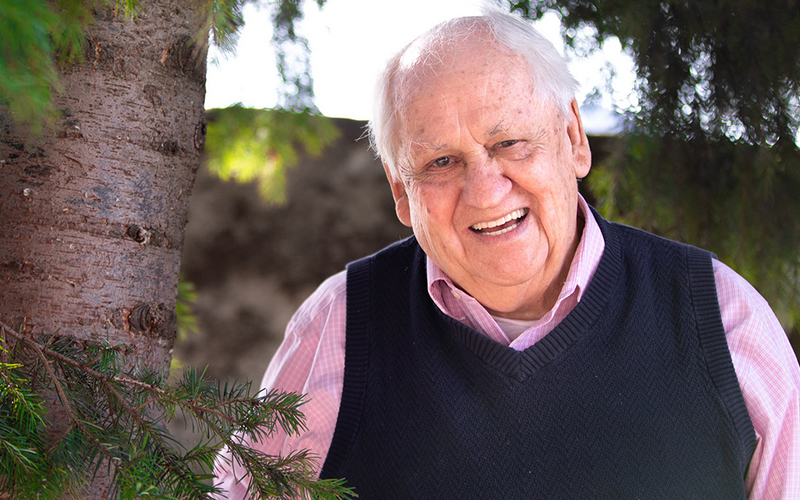
Tree Power
UW Tacoma Professor Orlando Baiocchi and a team of researchers are using trees to power Internet-of-Things-enabled sensors.
The word “technology” conjures images of futuristic devices with slick designs that operate at lighting speeds. To some, tech is rapid change fueled by machines whose power increases with every successive generation. Trees on the other hand are almost the exact opposite. Ancient and organic, trees move slowly. Progress is measured in years, not microseconds. Yet for all of their differences, trees and technology are compatible.
UW Tacoma Endowed Professor in Engineering Systems Orlando Baiocchi and a group of researchers in Brazil and Portugal are working on projects involving wireless network sensors and energy harvesting. One of the projects involves using trees to power a network of sensors. “The buzzword nowadays is energy harvesting but this is a very old idea,” said Baiocchi. “For instance, windmills utilize this concept to convert wind into mechanical or electrical energy.”
Baiocchi and UW Tacoma Assistant Professor Eyhab Al-Masri are working with Professor Cleonilson Protásio of the Universidade Federal de Paraíba in João Pessoa, Paraíba, Brazil. “The idea of using trees came from the fact that for some time people have been using thermoelectric generators,” said Baiocchi. The science is complex but essentially these generators convert temperature differences into electrical energy.

Early experiments in Brazil proved encouraging. The research team attached sensors to nails and inserted the latter into tree trunks. “During the day, the interior of a tree is colder than the exterior and at night it’s just the opposite,” said Baiocchi. “The temperature differences generated enough voltage to power the sensors, day and night.”
The phrase Internet of Things (IoT) refers to devices such as thermostats and lightbulbs that are connected to the internet. Baiocchi describes his teamwork as the “Internet of Natural Things.” Sensors used in the Brazil experiments could eventually be used to collect information about the level of CO2 and particulates in the air. These sensors will use power generated by the trees themselves to relay information to the cloud.
Baiocchi is planning to do a large-scale field test on the UW Tacoma campus in the near future. Meanwhile, he and his team are working on a project in the Archipelago of Azores, in the North Atlantic Ocean. In recent years, these Portuguese islands have become a hotspot for tourists. “The increase in visitors has also lead to an increase in pollution,” said Baiocchi. Recently, UW Tacoma electrical engineering senior student Eric Pospisil spent a week on the islands installing sensors. Protasio has also visited the islands with the same purpose. These sensors will monitor pollution levels around the islands as well as foot traffic along particular protected volcanic areas.
The decision to use trees in this way was a practical one. “Let’s say you want to get data from a place that’s difficult to access,” said Baiocchi. “If you’re using batteries as a power source then someone has to go out there frequently to swap them out. With this method we can get a continuous stream of data from locations that were once considered inaccessible.”
These early experiments are a proof of concept. “We’ve made a lot of progress but there’s still plenty of work to be done,” said Baiocchi. “One of the big issues is these devices have limited capability and consume a lot of energy.” If all goes well, Baiocchi hopes to deploy this technology in large urban areas. “We can use these sensors to monitor all kinds of things from pollution levels to traffic volume,” he said. “In a sense we’d be using trees to create a ‘Smart City.’”



